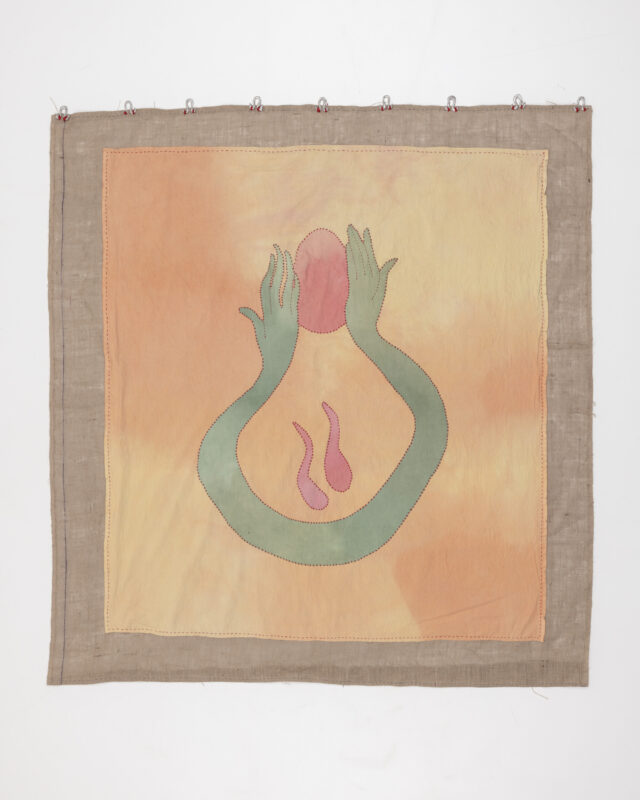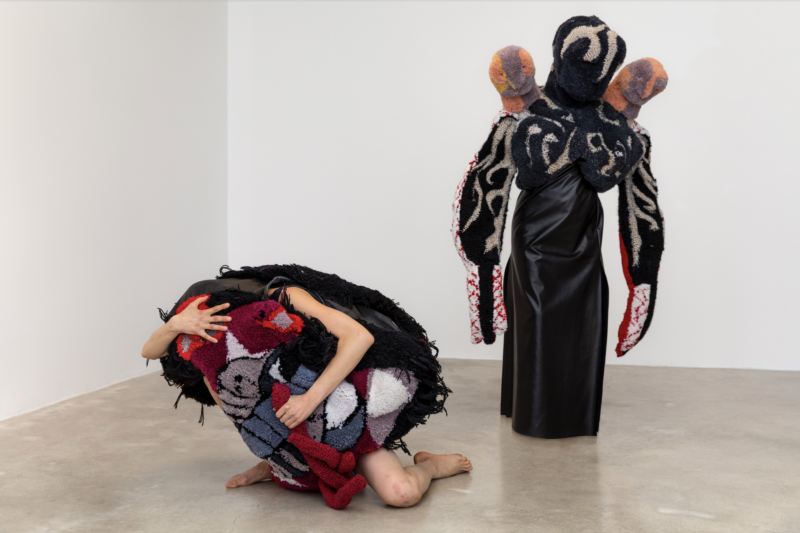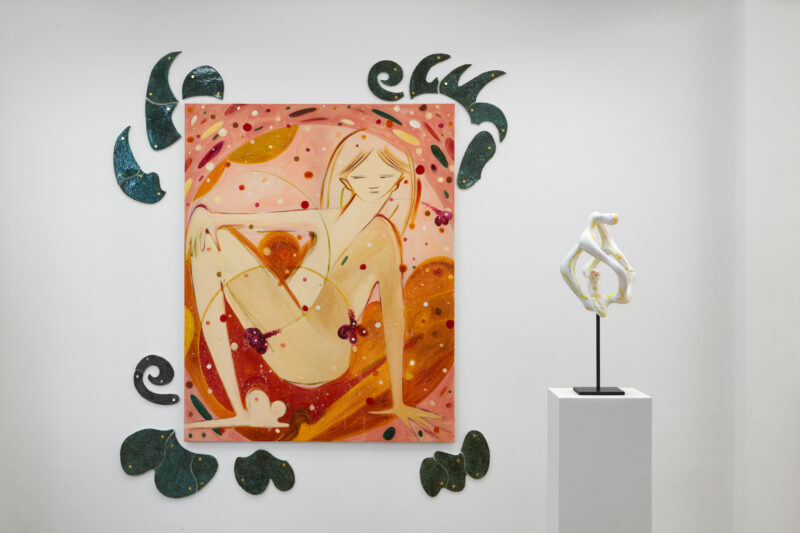Badr El Jundi, Madrid, presents the new exhibition ‘Processing the Past & Digesting the Future‘ curated by Huma Kabakci.
The show explores the digestive systems on a micro and macro level – an opportunity to actually explore our socio-political and natural environments.

The artists on show are Saelia Aparicio, Yulia Iosilzon, Anna Perach, Amba Sayal-Bennett and Rafal Zajko. Taking the digestive organ as a metaphor for the exhibition space, they offer a critical view on issues related to the multi-layering of our past and the excess of information of our present.
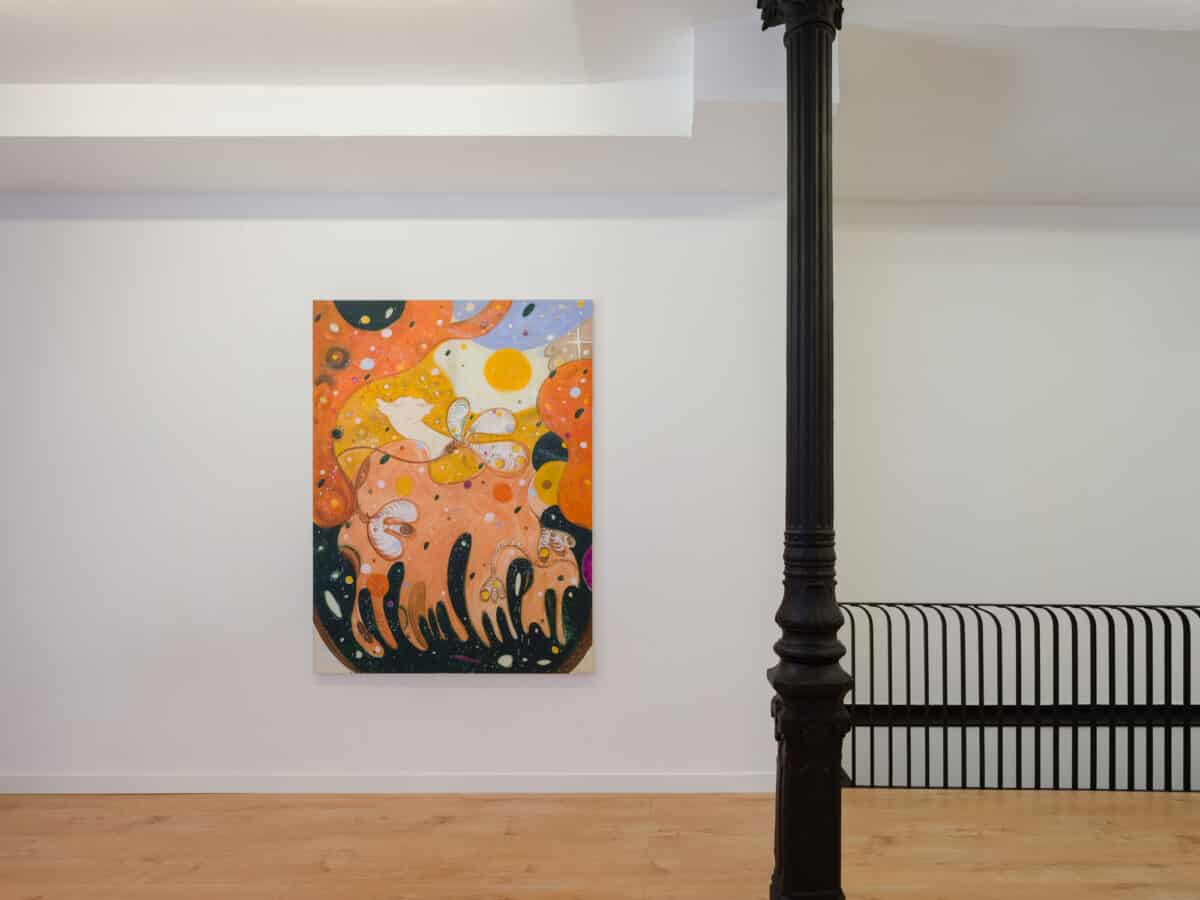
The exhibition space becomes almost an extension of our body or, rather, what lies inside of it. Indeed, the show offers an extremely engaging and, above all, embodied experience. Taking the connection between the gut and its nervous system, also known as the enteric nervous system (ENS), as a conceptual framework, ‘Processing the Past & Digesting the Future’ creates a palpable, or maybe palatable, experience in Badr El Jundi.
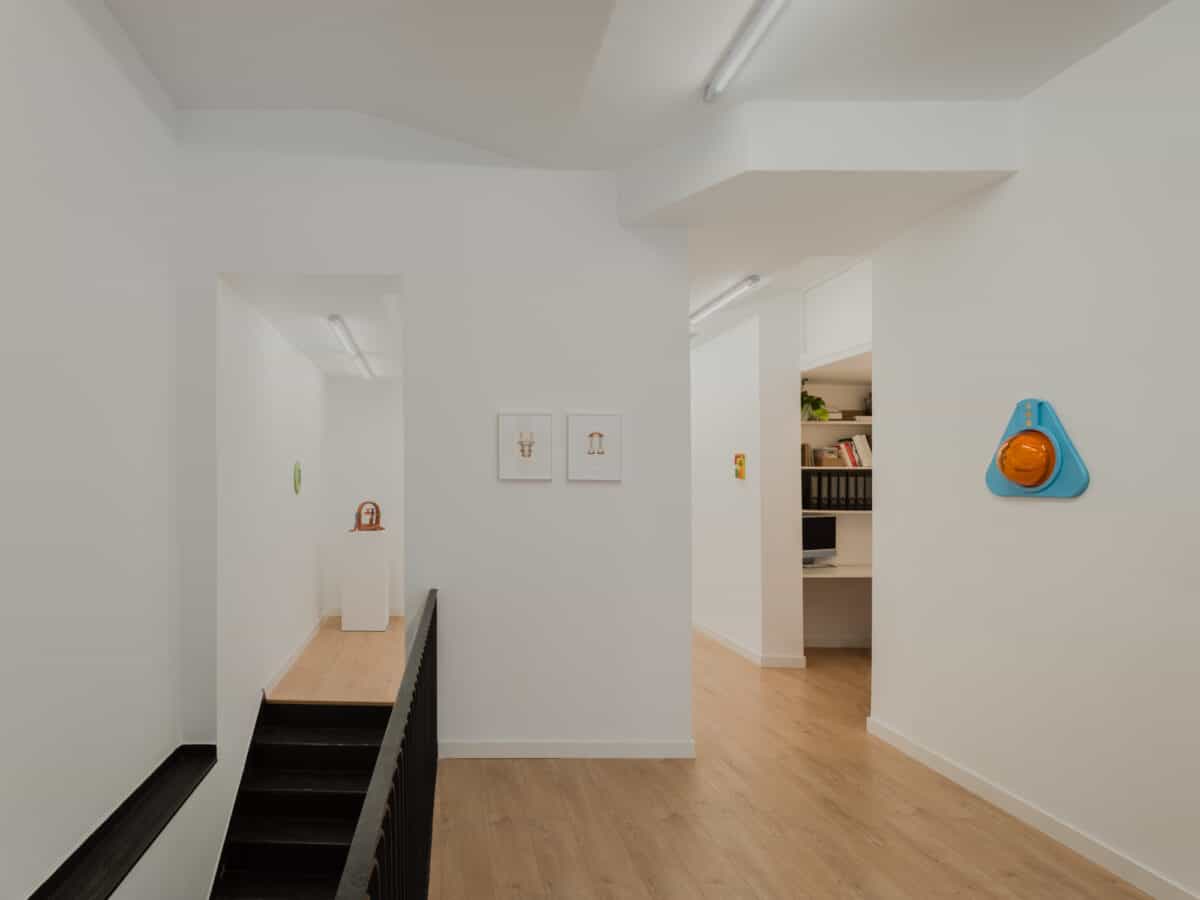
As the curator herself told me, the idea for the exhibition came after a very personal experience related to digestion. An intimate encounter with one’s gut lead Kabakci to appreciate about how the digestive system can be used as a metaphor to encourage critical thinking about society and socio-politics.
“By comparing the processes and components of the digestive system to societal structures, I wanted to analyse and draw insights into how our society functions and identify areas for improvement. For example, just as the digestive system ingests various foods to extract nutrients, a healthy society should be open to diverse perspectives and ideas (ideologically speaking).
The digestive system as a metaphor can help us think critically about how society functions, and encourage us to consider how different parts of the socio-political system work together, break down complex issues, and adapt to change. It can inspire us to strive for a more inclusive, diverse, and balanced society where everyone can contribute to and benefit from shared progress. Through the diverse practice and interests of the five artists in the exhibition, whether it is through folklore, architectural references, class systems or mythology, I tried to give different perspectives to “digesting” or “processing” our daily lives and the past critically.”

The exhibition’s path almost mimics the digestive process, incorporating different stages of digestion and the digestive system as a metaphor responding directly to the space. How we digest food and how we digest reality and time: this duality runs across all the show. Within this conceptual framework, artists reconsider and elaborate on both the white room and our gut. This becomes a symbolic place that acts as an allegorical replacement for society, encouraging visitors to think critically about the complex processes that shape our social and political environments.
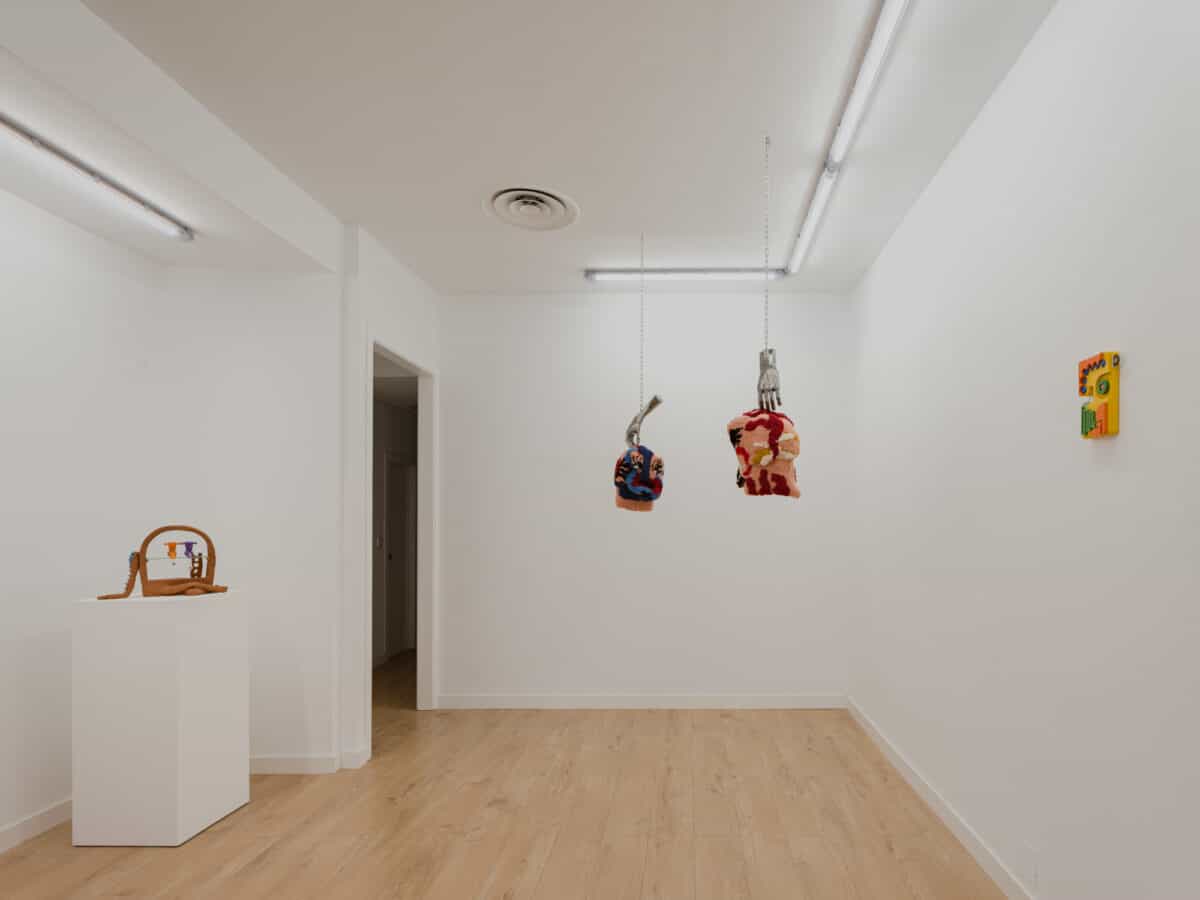
Some works are more explicit in their link to the human system, such as Amba Sayal-Bennett’s drawings: anthropomorphic architectures where doors are bellies and geometric composition are reminiscent of failed utopias. Other works, and those by Saelia Aparicio immediately come to mind, draw on a more conceptual and imaginative ground, using irony over history to build a highly personal world of symbol
With so many layers of the past and so much bombardment of information about the present, how do we navigate the future? The artists in the exhibition respond site-specifically to the gallery as a bodily organism in an attempt to “process” and “digest” our day-to-day internal and external crises.
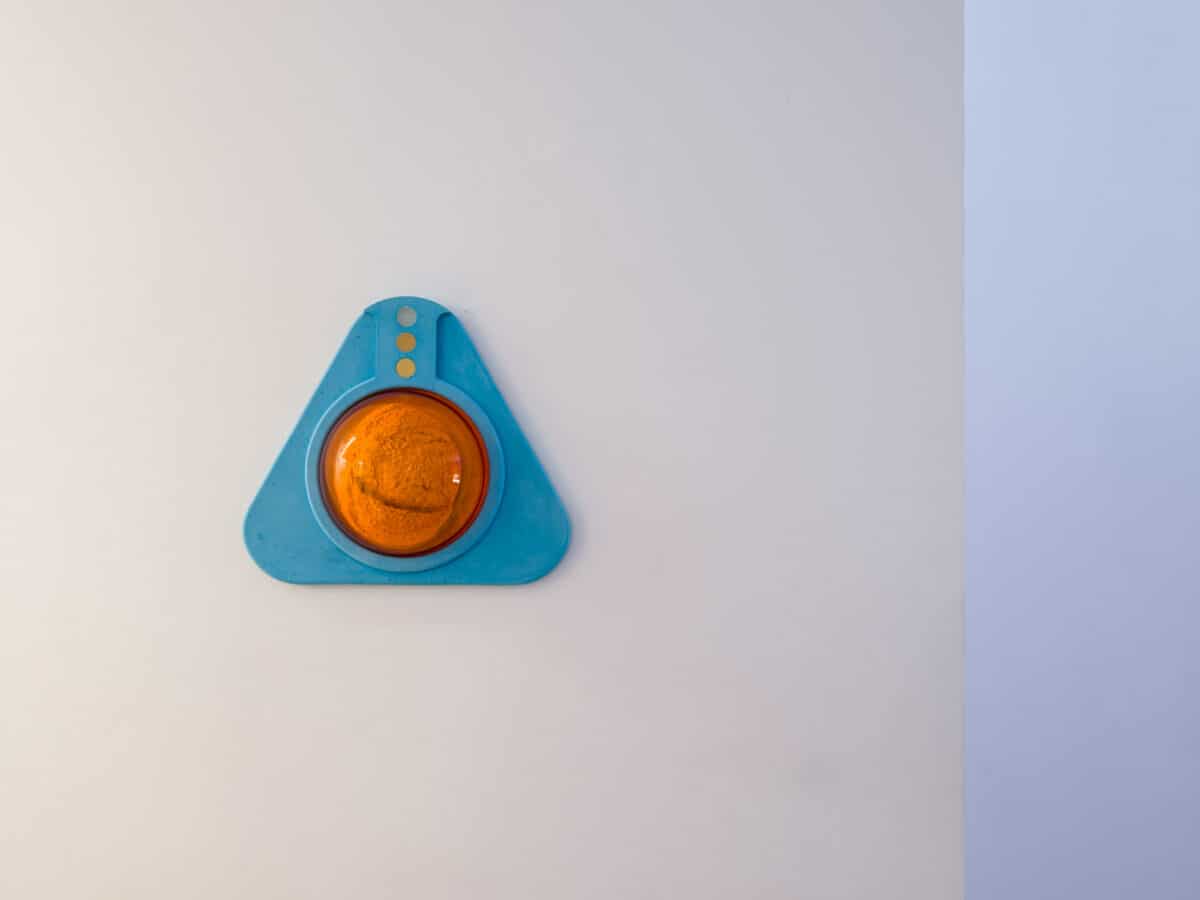
‘Processing the past and digesting the future’, Curated by Huma Kabakci – June 10th 2023, Badr El Jundi, Calle Barquillo 43. 28004, Madrid. badreljundigallery.com
About the artists
Saelia Aparicio (Valladolid, Spain, 1982), operates within the paradoxical spaces that we can find in what we consider the normal and the everyday, using a unique symbolic system to represent, but also to digest, a stark reality. With a multi-disciplinary practice the artist creates a speculative universe, inviting the audience to imagine with her. She creates an ecosystem of characters and situations that drives us, without guiding us, into this fascinating thing we call the present. From invasive species to housing problems, pollution or climate crisis, her work hybridises and navigates within this convoluted momentum using whispers instead of statements, talking through the materials she uses, the objects she builds, the shapes she creates. This produces in the visitor the aim to imagine and think collectively about alternative futures.
Aparicio completed her MA in Sculpture at the Royal College of Art in 2015. Since then, she has held several solo exhibitions, including ‘Protesis para invertebrados’ at La Casa Encendida in Madrid, Spain, in 2019, and ‘Smudging Gooey Airs’ at the Sarabande Foundation in London, in 2018. Aparicio has also participated in several national and international group exhibitions like ‘Retour Sur Mulholland Drive’ (curated by Nicolas Bourriaud) at La Panacée in Montpellier, France, in 2017; ‘Bloomberg New Contemporaries’ at The Bluecoat in Liverpool, The ICA in London and also ‘A Mysterical Day’ (curated by Tai Shani) as part of the Serpentine Gallery public programme, London in 2016.
Aparicio has completed multiple residencies, including FIBRA Platform in Mexico and The Bluecoat in Liverpool, UK in 2019; the New Contemporaries Studio Bursary with Sarabande: The Lee Alexander McQueen Foundation in 2017; the Sema Nanji Residency at Seoul Museum of Art in South Korea in 2016, and the Joan Miró Foundation in Palma de Mallorca, Spain in 2012. She has received numerous awards, such as the Henry Moore Jerwood Survey 2 and the Porthmeor Emerging Artist Residency in 2020, Generaciones 2019 by Fundacion Montemayor in 2019, the Workweek Prize by Artquest in 2017, and Bloomberg New Contemporaries in 2016.
Yulia Iosilzon (Moscow, Rusia, 1992) is a London-based artist working across painting and ceramics. Her figurative works on stretched silk are portals into vivid dreamlike worlds. Recurring to a playful element, Iosilzon repeats symbols and motifs, building up an iconographic arsenal to comment on personal, social and political issues. Her paintings on display here show a bodily relationship to nature, blossoming and metamorphosing. They hint at unfolding narratives of human-animal metamorphosis, scenes from everyday life, and social protests. Grounding her works within narrative and anecdotes, her visual references are wide-ranging: from the Jewish iconography of her heritage to imagery from childhood cartoons, representations of paradise, mythological tales, and prison tattoos.
The works establish internal rhythms through the inclusion of repeated details or iterative patterns such as waving hair or the undulating bodies of snakes. Expressive human faces emerge from landscapes or peer through swathes of vegetation, shifting through registers of emotional resonance as a tool for connecting with the viewer. Although on the surface Iosilzon’s works have a cheery cartoonish appeal, they also often harbour a subtle air of menace. With their smooth, gleaming surfaces, they invite us to reflect on humankind and express concern over the products of our time such as over-consumption, over-pollution, and social instability.
Yulia Iosilzon holds an MA in Fine Art from the Royal College of Art, London (2019) and a BA in Fine Art from the Slade School of Fine Art, London (2017). Including an upcoming exhibition at Carvalho Park, New York in April, the artist’s work has been the subject of solo exhibitions at Sapling, London; De Brock, Knokke; and Foundry, Seoul (all 2022); Huxley-Parlour, London (2021); Berntson Bhattacharjee in collaboration with Sotheby’s Nordics, Stockholm (2021); Osnova, Moscow (2020); and Roman Road, London (2020). Significant group exhibitions include those at Pangée, Montreal (2023); Untitled Art Fair, Miami and Kiaf Seoul, both with Carvalho Park; Tabula Rasa, Beijing (all in 2022); Space K, Seoul (2020); Hannah Barry Gallery, London (2020); Bloomberg New Contemporaries, South London Gallery, London and Leeds Art Gallery, Leeds (all 2019); Moscow Museum of Contemporary Art, Moscow (2019); and Kvadrat 16 Gallery, Copenhagen (2018).
Amba Sayal-Bennett (1991), is a British-Indian artist working across drawing, projection, and sculptural installation. Her practice explores how methods of abstraction are exclusionary and performative, crafting boundaries between what is present, manifestly absent, and othered. Her recent work focuses on the migration of modernist forms and their role within fascist and brutalist architecture. Using translation as method, she explores the movement of bodies, knowledge and form across different sites, processes inherent to the diasporic experience.
Amba Sayal-Bennett lives and works in London. She received her BFA from Oxford University and her MA in Sculpture from the Royal College of Art. She was awarded her PhD in Art Practice and Learning from Goldsmiths and has published her practice-based research with Tate Papers. She is currently an associate lecturer in Visual Culture at UWE Bristol. Between January and March 2022, she was The Derek Hill Foundation scholar at the British School at Rome in Italy. Recent exhibitions include Geometries of Difference, Somerset House, London (2022); Horror in the Modernist Block, IKON, Birmingham (2022); My Mother Was a Computer, indigo+madder, London (2022); and Tomorrow, White Cube, London (2021).
Anna Perach (1985, USSR) is an artist living and working in London, UK. Her practice explores the dynamic between personal and cultural myths. With specific interests in how our private narratives are deeply rooted in ancient folklore and storytelling. In her work, the artist interweaves female archetypes into sculptural hybrids in order to examine ideas of identity, gender, and craft.
Her main medium of work is wearable sculpture and performance. Anna works in a technique called tufting, making hand-made carpet textiles, which then transform into wearable sculptures. She begins by creating a pattern of a three-dimensional form, followed by manually tufting each piece of the pattern, and finally assembling it into a wearable, tufted sculpture.
The wearable sculpture functions as both a garment that is performed in as well as a free- standing sculpture. Through this medium, the artist examines how elements associated with the domestic sphere such as textiles and carpets operate as an extension of the self and reflect one’s heritage and gender role. In Perach’s performances the tufted, domestic carpet serves as an external added layer of skin, which hides the physical body but exposes fragments of the self.
Anna Perach holds an MFA in fine art (distinction) from Goldsmiths, University of London (2020). In 2022 Perach presented a solo show with Edel Assanti in London and took part in Artissima with ADA gallery where she won the Carol Rama award. She has exhibited internationally at galleries including: Richard Saltoun (London, UK), Sommer gallery (Basel, Switzerland) and Herzliya Museum of Contemporary Art (Herzliya, Israel). In 2021 Perach took part in Arco Madrid 2021 with The Ryder gallery and received the Ingram prize award; in 2020 she received a studio award with Sarabande, The Lee Alexander McQueen foundation as well as the Gilbert Bayes award. Recent publications include Artforum and Art Maze Mag.
Rafal Zajko (Bialystok, Poland 1988) is a polish artist based in London, UK. His work deals with issues around the industrial past exploring its environmental impact in relation to working class heritage and queer identities. His sculptural practice incorporates diverse materials and processes, including ceramic, ventilation systems, prosthetics, and performance as a means to examine Polish folklore, science fiction and queer technoscience; placing emphasis on the industrial materials and processes that resonate with and honour his heritage.
Rafal Zajko holds an MFA in Fine Art from Goldsmiths, University of London and a BA (Hons) in Fine Art from Chelsea College of Art, London, UK. Recent solo exhibitions include Amber Waves II, Galeria Fran Reus, Palma, Mallorca (2022). Song to the Siren, Cooke Latham Gallery, London (2022), Resuscitation, Castor Projects, London, UK (2020); We Were Here/My Tu Bylismy, Galeria Im. Slendzinskich, Bia?ystok, Poland (2019); Unputdownable, White Cubicle, London (2018). He has participated in numerous group exhibitions including shows at London Open 2022, Whitechapel Gallery, London, UK, New Contemporaries 2021, South London Gallery, X Museum, Beijing, China (2020); Ashes/Ashes, New York, USA (2019); EXILE, Vienna, Austria (2019); Vitrine, Basel, Switzerland (2019); Litost, Prague, Czech Republic (2018). Rafal Zajko is currently working on a public commission with Wysing Arts Centre and St. Peters School in Cambridge (2023).

